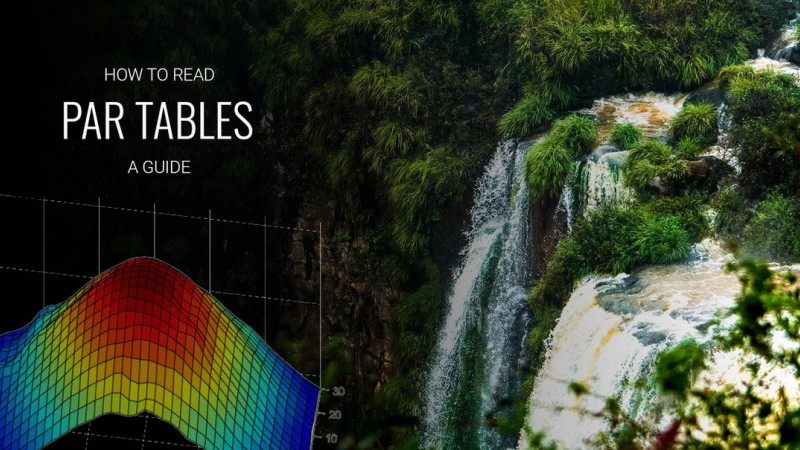Share
01 Jan


Posted By
0 Comment(s)
2599 View(s)

PAR (Photosynthetically Active Radiation) is the most useful measure of light intensity for plant growth, as it directly measures the amount of light available for photosynthesis in plants.
Plants use visible light for photosynthesis, ranging from weak blue light to far-red light, described by wavelengths between 380 nm and 750 nm. The range between 400 nm and 700 nm is primarily used by plants to power photosynthesis, and this is called Photosynthetically Active Radiation (PAR). Plant biologists quantify PAR using the number of photons in the 400-700 nm range received by a surface over a given period or the Photosynthetic Photon Flux Density (PPFD) in units of μmol/s. This value does not differentiate between photons of different wavelengths.

The PAR table above (from the Finnex LED module) shows the amount of light reaching different tank depths for a specific light module. The left axis shows PAR values for areas directly under the light. At 6 inches (15 cm) depth, the PAR value is 186, dropping to 73 PAR at 18 inches (46 cm) depth.
Lighting is strongest directly beneath the central line of the light fixture, decreasing with increasing distance from the central line. The rate of decrease depends on the tank's depth and the reflectors/lenses of the fixture. Aquarium lighting manufacturers usually provide PAR readings taken from a filled aquarium.
Doubling the number of light fixtures doubles the PAR value if the lights overlap completely. PAR values are additive in this sense.
What if no PAR data is available?
Some manufacturers do not publish PAR tables. By searching forums or using Google, one can often find measurements shared by hobbyists. Another way to assess the effectiveness of aquarium lighting is to look for examples of aquariums using a specific lamp or fixture from a given manufacturer. Considering the large variety of aquarium lights available on the market, there are few reasons to purchase entirely unknown and untested products, typically driven by low prices.
General PAR guidelines for aquariums:
Lighting should produce enough PAR at the substrate depth of your aquarium. Common guidelines used by hobbyists with planted aquariums are:
5 to 30 µmol - Low light: Suitable for shade-loving aquarium plants such as Anubias, Java fern, Cryptocoryne, and mosses. Using low light just makes life easier, with fewer algae problems. Less light results in slower growth and less maintenance overall.
~50 µmol - Medium light: With good CO2, you can grow most commercially available plants, though you may not achieve the most intense coloration with colored plants. Good for carpet plants. Most carpets become denser with at least medium light levels.
90+ µmol - High light: Suitable for red/colored aquarium plants. Stronger light will emphasize coloring more intensely. Allows greater density and self-shading effects. However, this level of lighting requires good control over aquarium cleanliness and plant health to avoid algae problems.